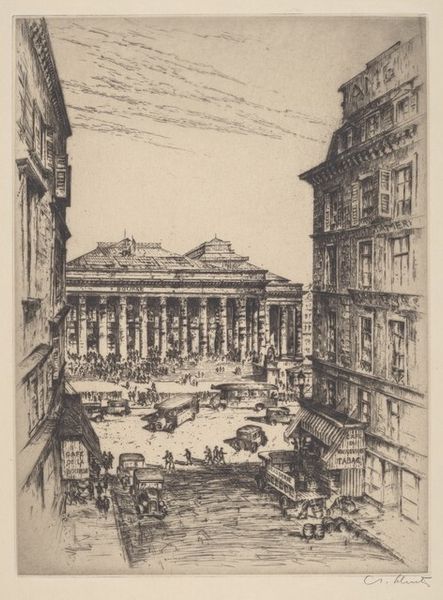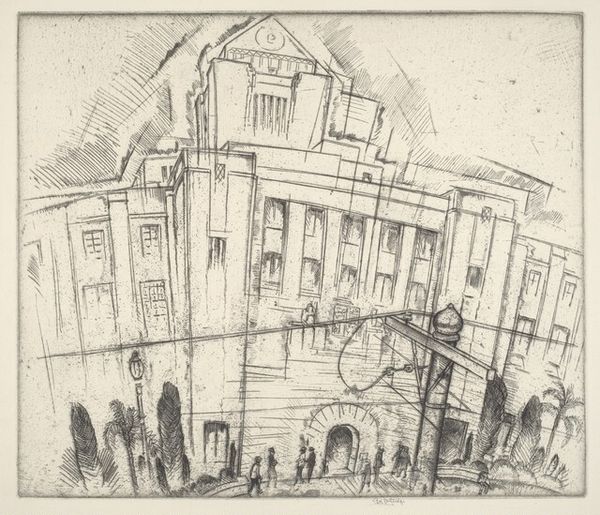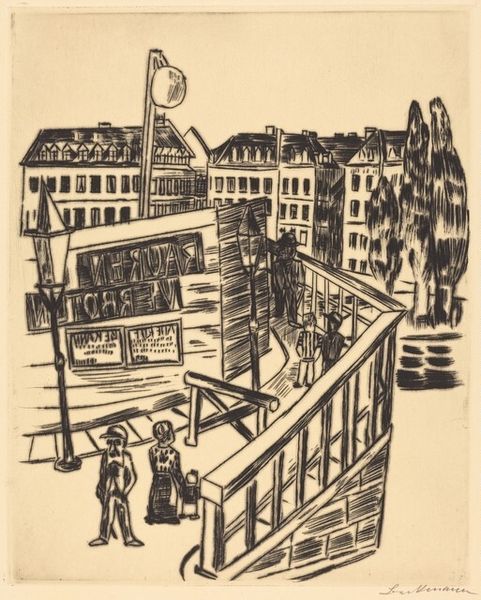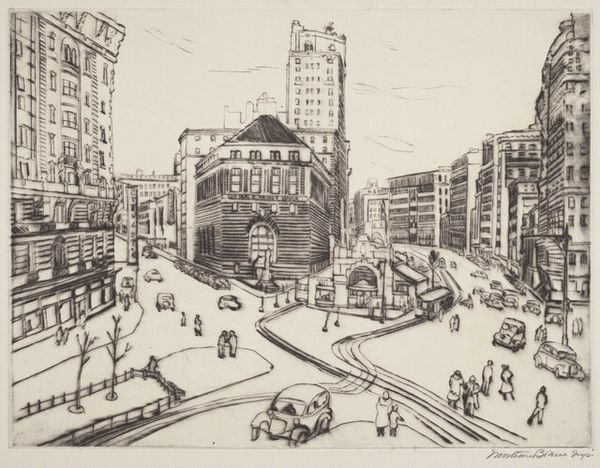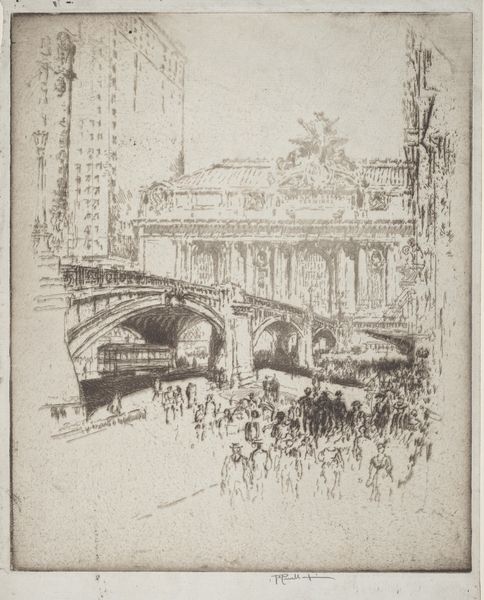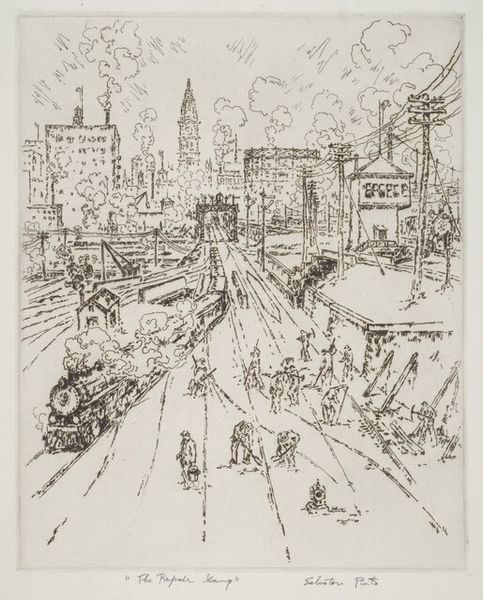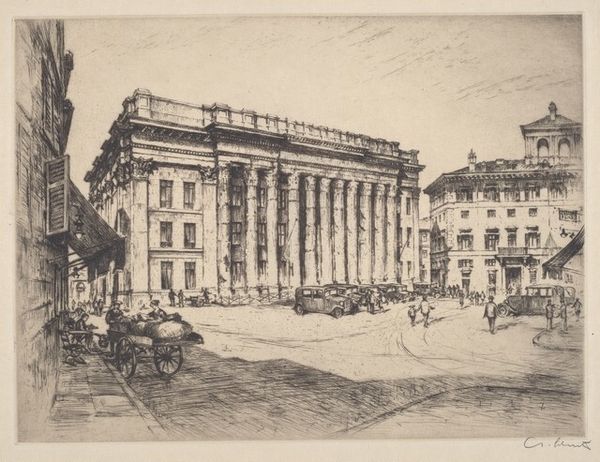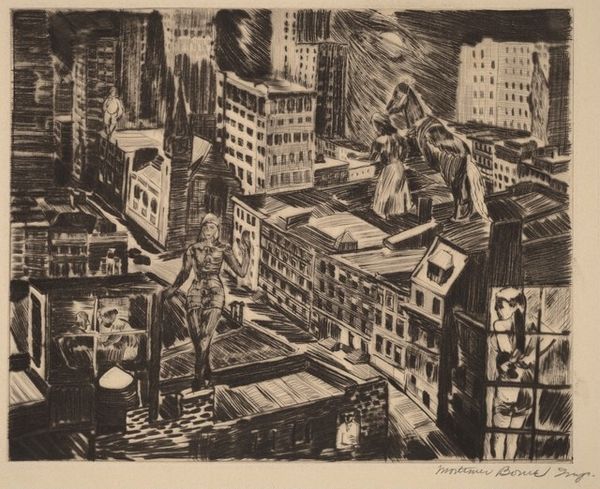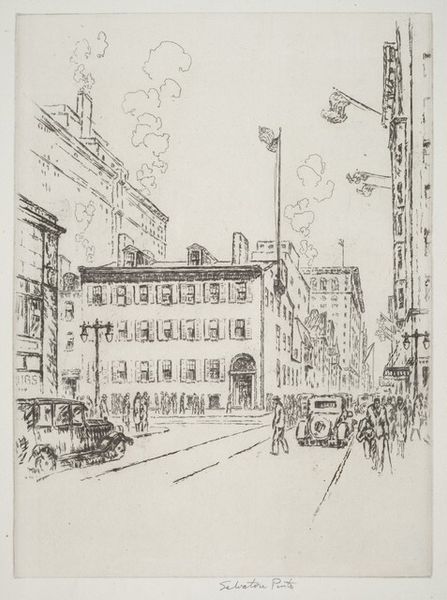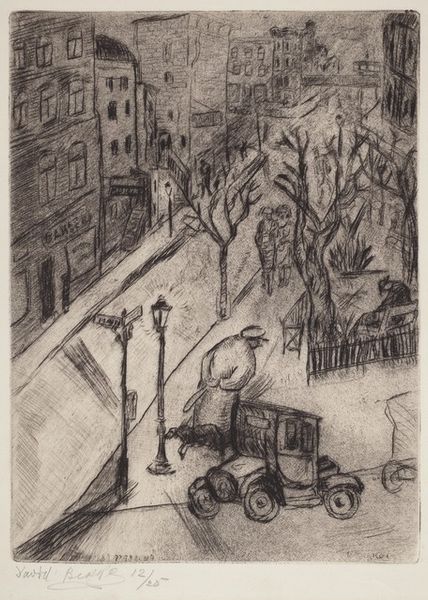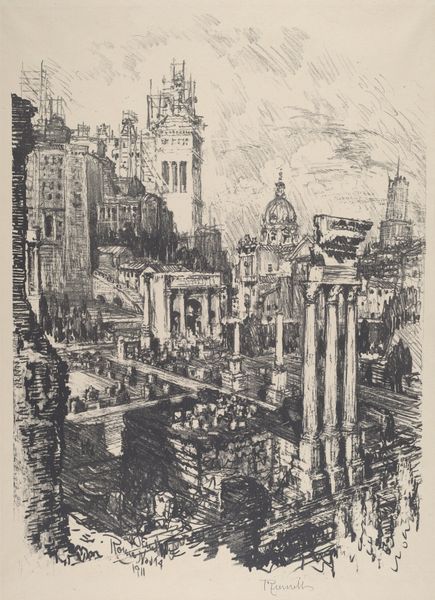
drawing, print, ink
#
drawing
#
cubism
# print
#
form
#
ink
#
line
#
cityscape
#
modernism
Copyright: National Gallery of Art: CC0 1.0
Editor: This is Raoul Dufy’s "Rue Royal," created around 1930. It looks like ink on paper, a print maybe? It’s a busy Parisian street scene, full of cars and people. What's fascinating is the speed conveyed through such simple lines, capturing the energy of a city undergoing massive changes. How do you interpret this work? Curator: From a materialist perspective, Dufy's choice of a relatively inexpensive and reproducible medium like ink and print is quite telling. "High art" in this period was all about "unique" or "precious" materials and that separated it from “popular media”. Yet Dufy embraces what was more popular for the masses. This challenges that very distinction between elite art and everyday production and consumption. Editor: That's a very interesting point! So you're suggesting that by using printmaking, Dufy democratizes the image of Parisian life? How might this influence the reception of his work? Curator: Precisely! He uses a quick, almost industrial, process to depict a modernizing Paris, reflecting on how urban experience becomes a commodity. Look at how he uses line; it mimics the pace and flow of industrial production. Editor: The loose lines do almost vibrate with energy! Did the use of drawing materials change anything else about the production and reception? Curator: By embracing ink, he bypassed the traditional hierarchies associated with painting and sculpture. Ink's accessibility allowed for quicker execution and wider distribution and it meant lower cost which meant that more of the populace could potentially buy prints or copies. Do you think that Dufy wanted to use popular and relatively less labor-intensive print production processes? Editor: I think you're right. Viewing it through that lens makes it feel like a celebration of, or at least an engagement with, modern modes of production. Curator: Absolutely. Considering the social context and material processes allows us to understand Dufy’s "Rue Royal" not just as a cityscape but as a statement on the evolving relationship between art, labor, and society in the age of mechanical reproduction. Editor: I never would have thought about it that way! Thank you for shining light on that aspect!
Comments
No comments
Be the first to comment and join the conversation on the ultimate creative platform.
